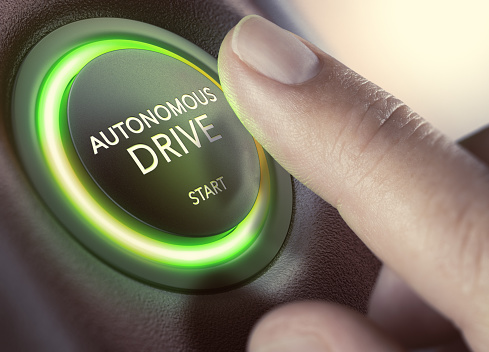For many years, driverless cars were the stuff of science fiction — an intriguing thought exercise, but nothing we ever expected to see in the real world.
That is all changing now, and quickly. Self-driving vehicles are in the testing phase in at least 10 locations around the U.S., and it is only a matter of time before we start to regularly see such driverless cars sharing the streets with us.
While self-driving cars are often touted as an excellent way to increase highway safety and provide transportation to those who cannot drive, the implications for retirees may be even bigger. Approximately 80% of the 45 million Americans who are over age 65 currently live in a car-dependent area. With the introduction of self-driving cars, such retirees should be able to age independently in place for far longer.
Of course, the road ahead for self-driving technology is not entirely clear of obstacles. There are still many hurdles to overcome, including the technological, legal, ethical, and social considerations that automated driving can complicate. Tomorrow’s retirees may very well be reliant on robotic cars, so here is what you need to know today to be prepared for the major changes this technology has in store.
Safety vs. Mobility Among Older Drivers
According to the Insurance Institute for Highway Safety (IIHS), the per capita fatal crash rates of adult drivers begins to increase after age 70. After age 80, older drivers die in car crashes at about the same rate as teenagers, although this is attributed to their increased fragility and vulnerability to injury.
Although these statistics are troubling, the good news is that the number of crashes involving adults over the age of 70 is declining. This is partially due to improvements in car safety and partially due to better health and fitness among older adults over the past several decades.
However, some of these improvements in safety come about because of self-limiting behavior by older drivers. According to Ron Medford, a former deputy director of the National Highway Traffic Safety Administration, as quoted by AARP, older drivers voluntarily stop driving when it seems like their abilities can’t match the driving conditions: “First, they don’t drive at night. They don’t drive more than 50 miles away, then 30 miles. Their lives just contract.”
There is clearly a need for on-demand mobility for older adults who no longer trust themselves to drive but would otherwise feel comfortable living independently. It’s this need that self-driving technology is hoping to fulfill.
Levels of Automation
When we discuss self-driving cars, we imagine a vehicle that handles all of the complex tasks necessary to carry passengers from point A to point B. But automation of driving tasks occurs on a scale. For instance, both automatic transmission and cruise control can be considered types of automation, although no one would describe cars with these features as “self-driving.”
This is why the Society of Automotive Engineers has identified six levels of driving automation, from 0 to 5:
- Level 0—No automation. These cars require human operation for every task.
- Level 1—Driver assistance. Most functions are still controlled by the driver, but there are specific controls, like braking or throttle, that are automated.
- Level 2—Partial automation. In these cars, the execution of steering and acceleration/deceleration is handled by the automated system, and it includes features like cruise control and lane centering. The driver is still ultimately in control of monitoring the driving environment. The Tesla Model S is considered a level 2 vehicle.
- Level 3—Conditional automation. These vehicles are capable not only of handling driving maneuvers like braking, accelerating, decelerating, and changing lanes, but also of making decisions about driving tasks. The driver is still necessary, as he or she must take over in case of weather or other conditions that jam the vehicle’s sensors. As of right now, level 3 cars are designed to handle highway driving.
- Level 4—High automation. These vehicles are designed to perform all safety-critical driving functions and monitor the roadway for an entire trip, within the vehicle’s operational design domain. These level 4 cars cannot handle driving in every scenario, including extreme weather or unusual driving environments (such as dirt roads).
- Level 5—Full automation. This is the level of automation that would fully replicate a human driver’s dynamic driving abilities. Passengers would not be expected to ever take over in a level 5 car.
The Consequences of Automation
Several of the automakers and technology companies that are working on self-driving cars hope eventually to offer fully automated cars that allow passengers to nap while the vehicle drives. While this could be a dream come true for older adults and individuals with limited mobility, there are some important consequences to consider as we get closer to that reality.
To begin with, until fully automated cars are available, conditional automation and high automation may actually put older drivers at greater risk. That’s because a driver who does not practice his or her skills regularly will experience skill atrophy, making it more difficult to handle the kind of dynamic driving problem that an autonomous car cannot handle on its own. In addition, taking over control of a vehicle after “zoning out” while the car drove itself will likely require faster reflexes than an older driver can count on in a dangerous situation.
It’s also important to remember that self-driving cars will eliminate the human touch, which can make a big difference for older adults. For instance, a retiree who relies on Uber or a taxi service to get around can request assistance getting into and out of the car. The driver of such a car will also be sure to park in such a way that the passenger does not step out into a puddle in inclement weather, whereas a self-driving car may not be able to make such accommodations.
Finally, learning to trust a self-driving car may be an uphill battle for older adults. Douglas Adams famously described the tendency to mistrust new technology in adulthood by saying, “Anything invented after you’re 35 is against the natural order of things.” While 40% of Millennials have expressed comfort with the idea of fully autonomous cars, only 13% of individuals 75+ feel the same way. While self-driving cars may offer much-needed mobility, the trust factor could be enough to keep many older adults from trying them.
Retirement Communities Will Likely Be Early Adopters
Despite all of these potential issues, it is likely that older adults are going to be among the first drivers to embrace this technology, in part because of where many retirees live.
As it turns out, retirement communities are a nearly perfect venue to introduce level 4 self-driving cars. Such communities tend to be self-contained environments, which makes programming the car’s operational design domain a simpler task.
In addition, many retirement communities already use golf carts as a primary mode of transportation, and self-driving golf carts already exist in places such as Facebook’s corporate campus. The adoption of self-driving golf carts and other automated mini-vehicles is a natural progression in communities like The Villages, where transportation is limited to golf carts.
Retirement communities may also have the ability to purchase and set up a fleet of self-driving cars, which residents will have access to as part of their amenities. Under such a scenario, a resident would pay per mile for the use of the self-driving car and eliminate the need for owning his or her own vehicle.
Technology, with a Side of Quality of Life
We are still several years away from autonomous cars being a common sight on the road, but there is plenty of reason to be excited. Automobile and technology companies are committed to bringing self-driving cars to the marketplace, and it is likely that older adults will be among the first adopters. This innovation can help reduce the incidence of isolation among older adults, and improve the lives of retirees who wish to age in place.







I hope I never meet a driverless car or truck coming down the highway.
They should not be allowed on the road. They are dangerous.